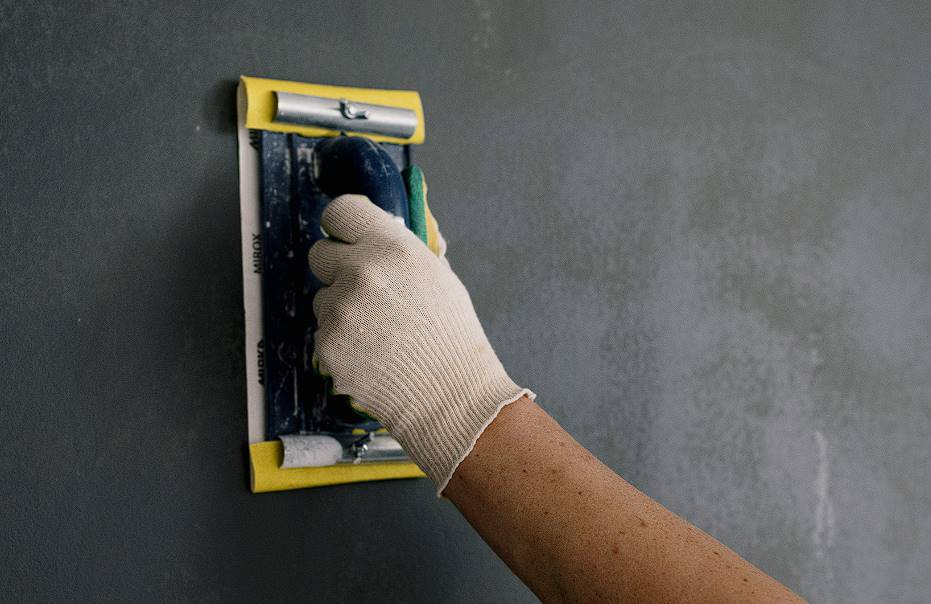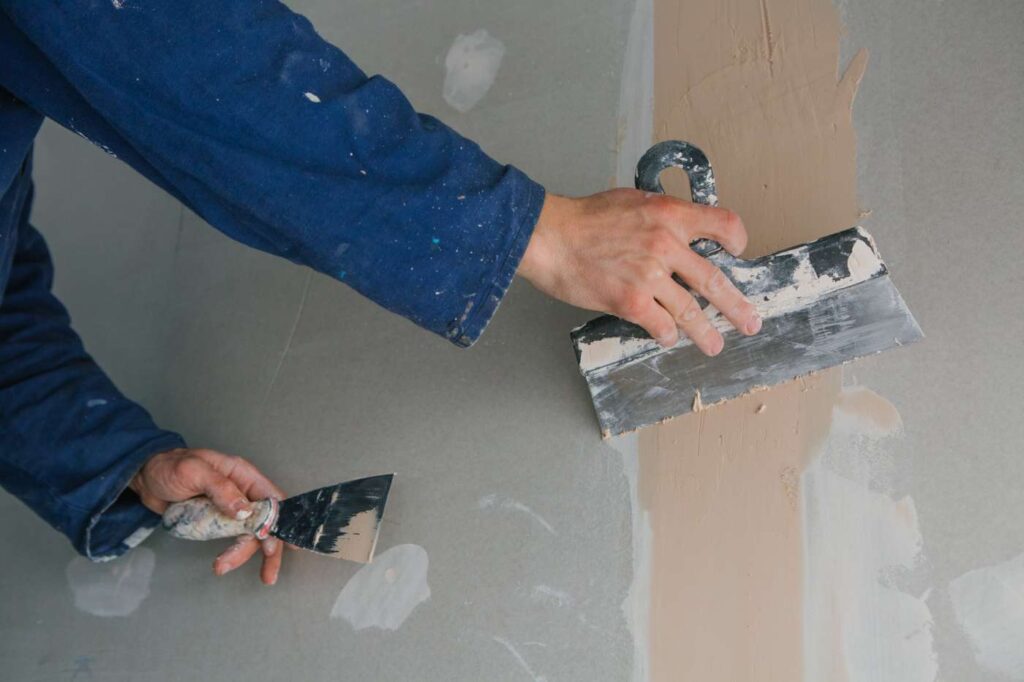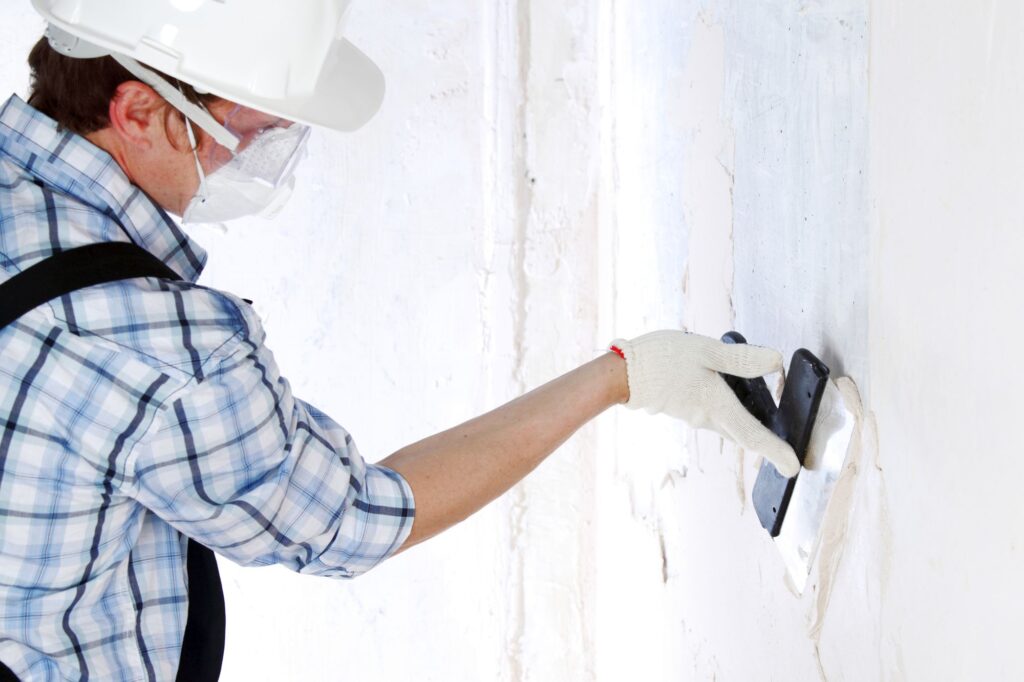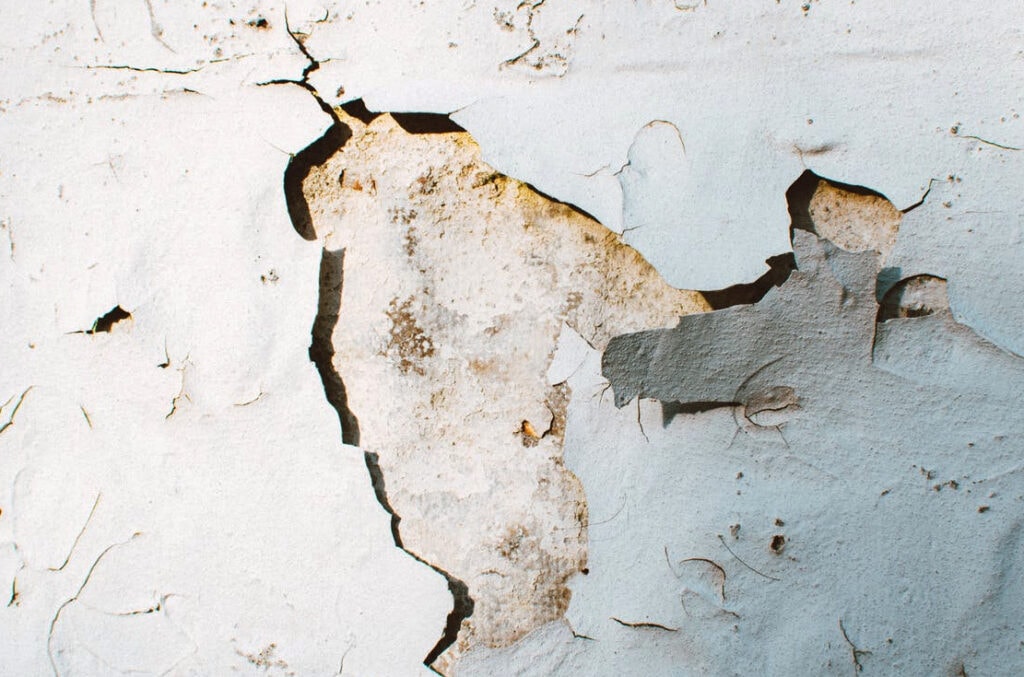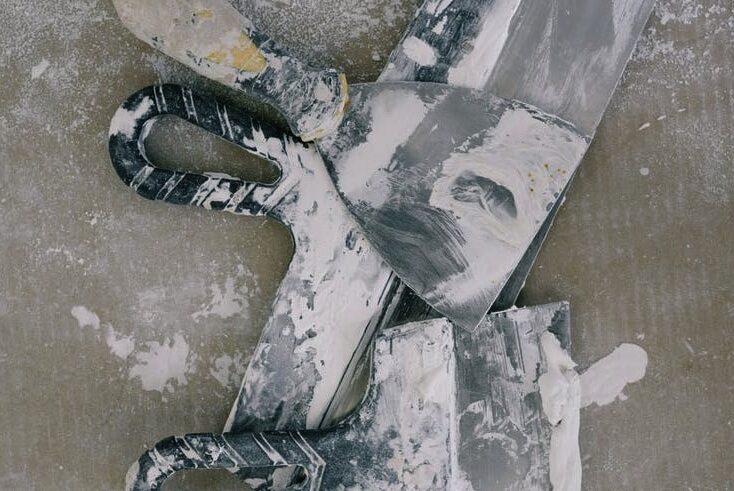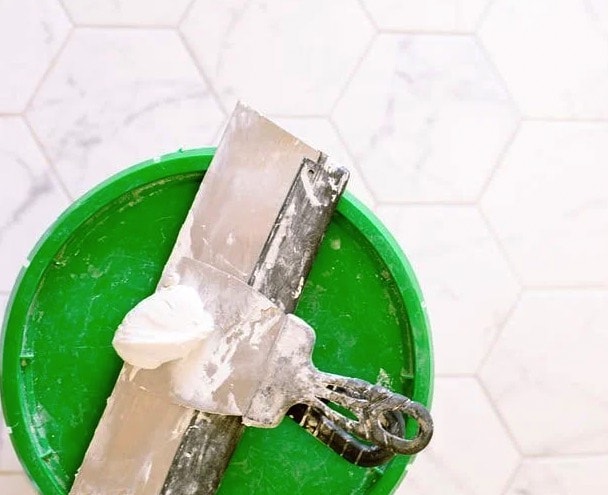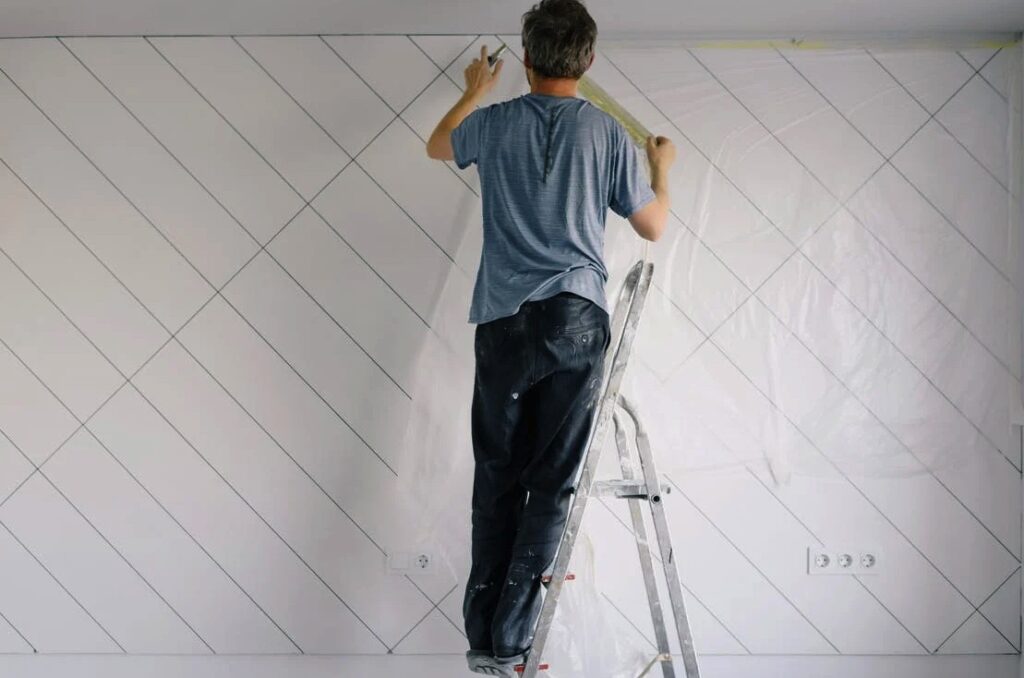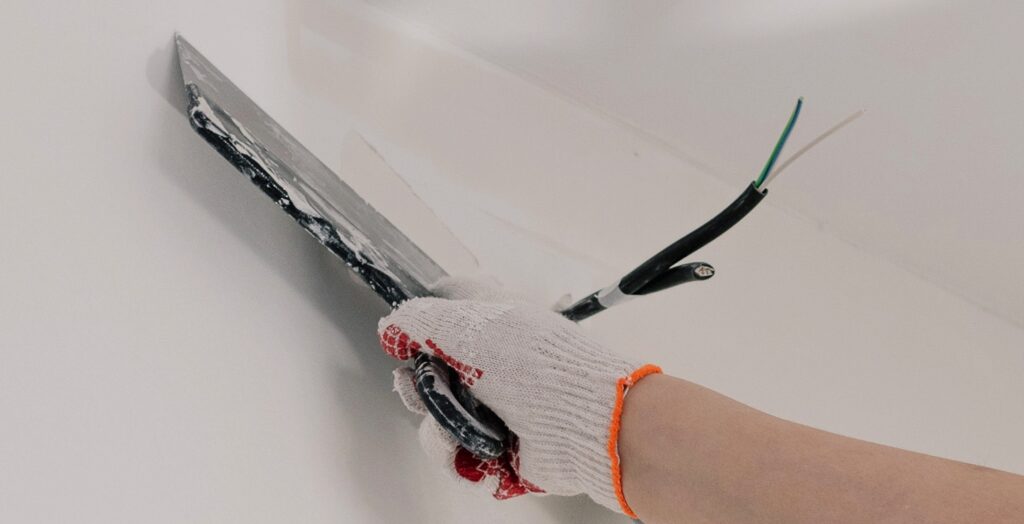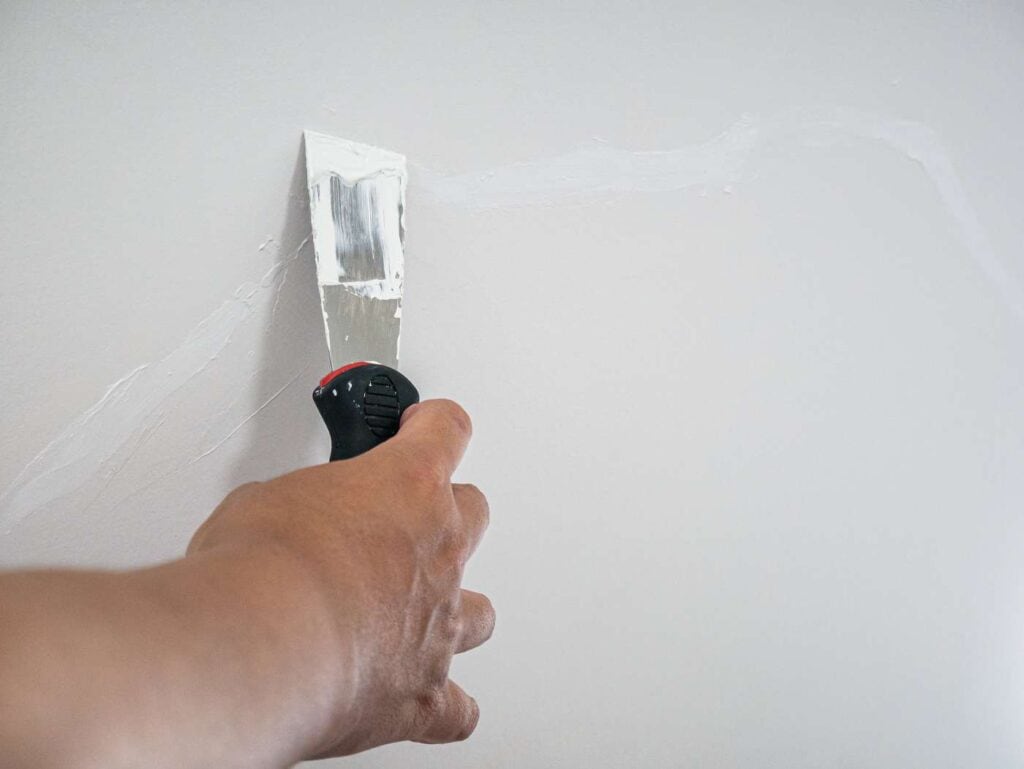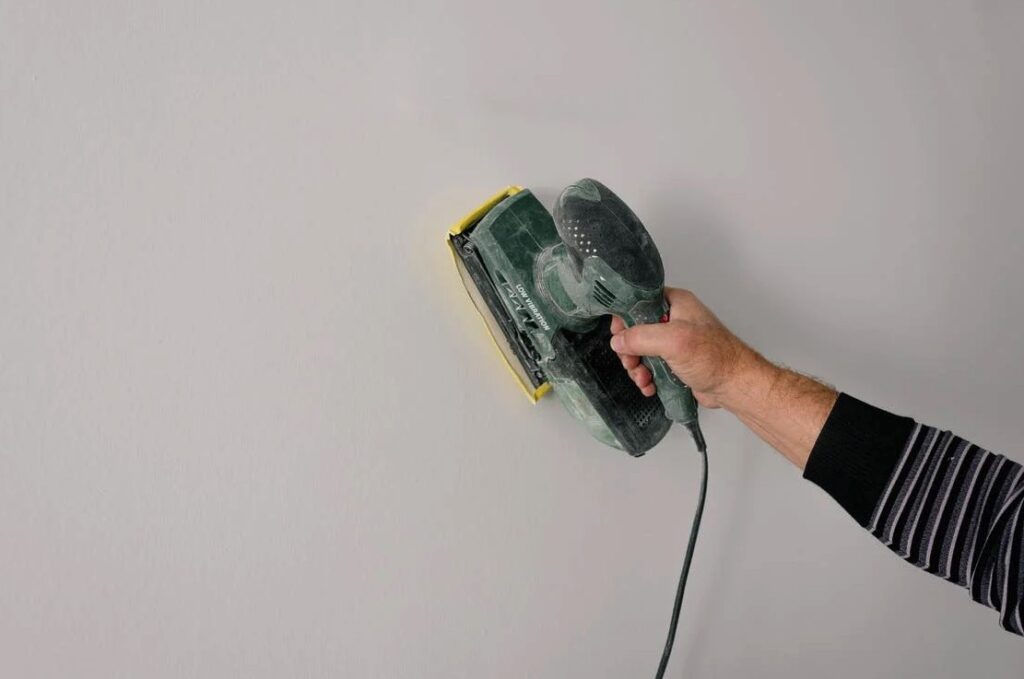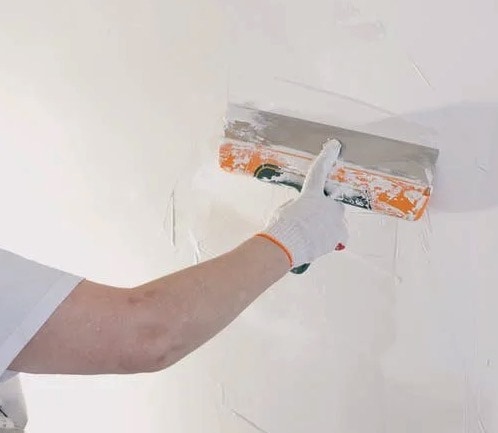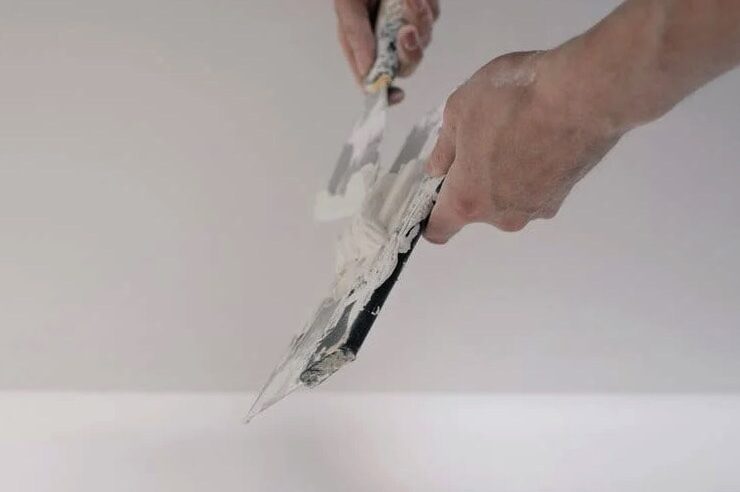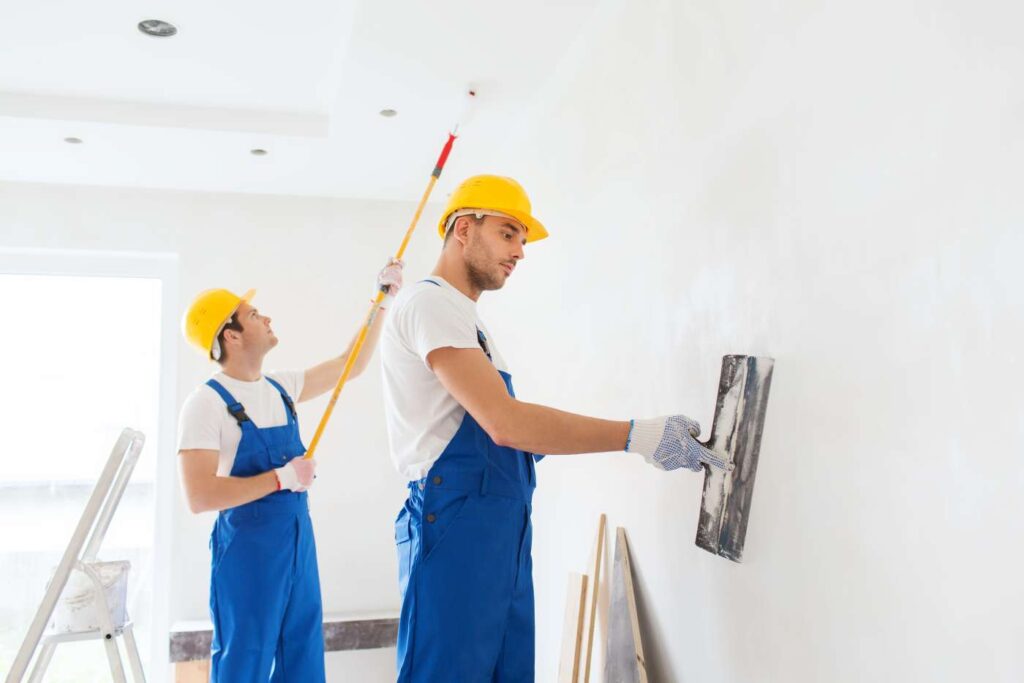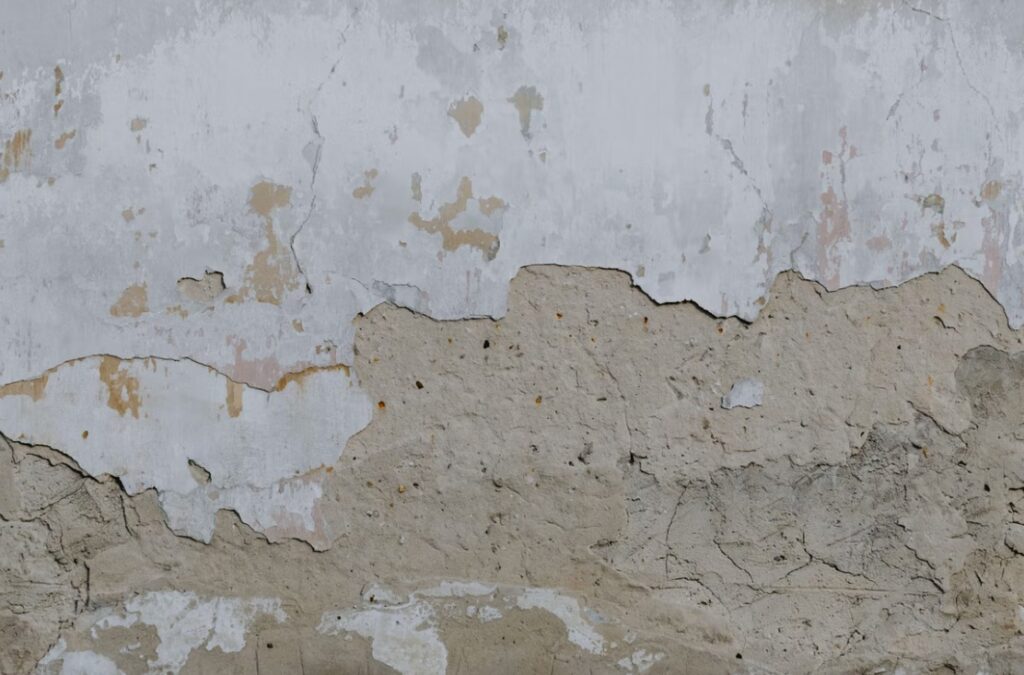Are you interested in learning more about the building industry and the materials used to make functional and aesthetically pleasing structures? Cement, a multipurpose chemical famous for its outstanding adhesive capabilities, is frequently used in the construction industry.
Cement is essential in the building because it helps create a strong and smooth surface, especially when plastering. Whether you're a do-it-yourselfer or a professional builder, you must have a firm grasp on the advantages and applications of cement for plastering.
Cement is indispensable in today's building practises; it is used to fortify walls and as a base for other aesthetic touches. This article will answer the question "What is used for plastering cement?" by exploring the many purposes and methods of applying cement plaster.
Let's learn more about cement plastering and its role in the building industry.
Plastering Cement Vs. Other Plastering Materials
Plastering is used in the building and interior finishing industries to create uniform and aesthetically pleasing surfaces. Each substance has its own set of benefits and drawbacks. Let's see how plastering cement stacks up against lime plaster & gypsum plaster, two other common alternatives.
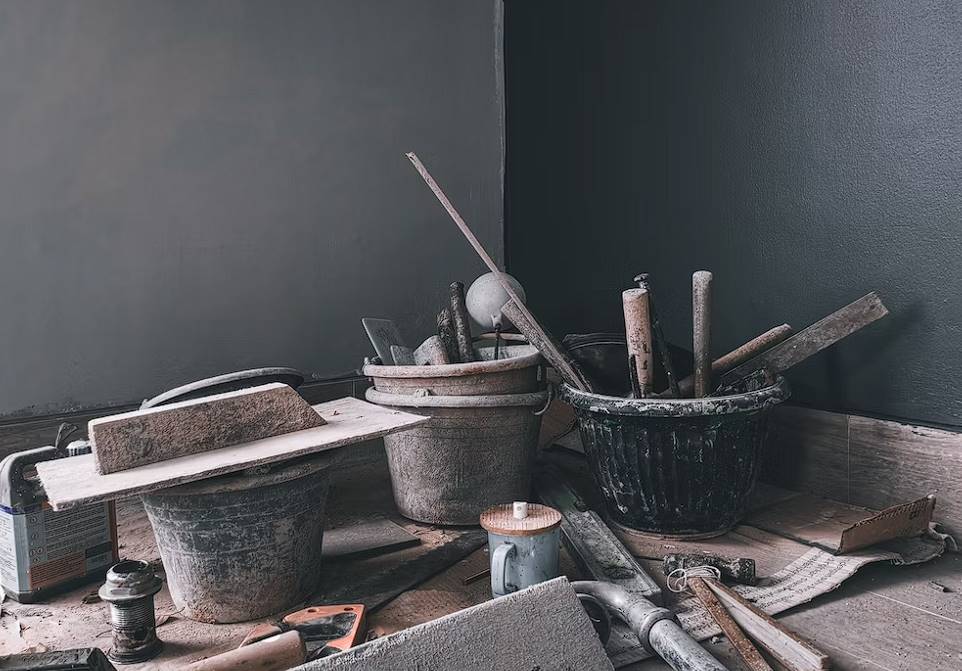
Plastering Cement:
Advantages:
- Strong Adhesion: Plastering cement has great bonding properties to stay securely attached to the surface for a long time.
- Versatility: It's adaptable to various building tasks thanks to its use on concrete, brick, and masonry surfaces.
- Fire Resistance: Cement used for plastering has natural fire resistance, which increases the security of the building.
- Enhanced Durability: Once it cures, it forms a thick barrier that protects the walls from damage and makes them more resilient to the elements.
Limitations:
- Prone to Cracking: If the proper water-to-cement ratio isn't used or if the conditions aren't right, plaster cement can crack.
Lime Plaster:
Advantages:
- Breathable: Lime plaster lets walls "breathe," allowing moisture to freely move in and out and reducing the risk of problems like condensation and mould growth.
- Environmentally Friendly: Lime plaster is a green option because it is manufactured from non-toxic ingredients like sand and water.
- Flexibility: Since it is more malleable than cement plaster, lime plaster can accommodate minor shifts in older or historic buildings.
Limitations:
- Longer Drying Time: When opposed to cement plaster, lime plaster typically needs more time both dry and cure.
- Weaker Adhesion: Although lime plaster adheres well, it might not be as sturdy as plastering cement in some cases.
Gypsum Plaster:
Advantages:
- Quick Drying: When compared to cement & lime plasters, gypsum plaster dries more quickly, which speeds up construction.
- Smooth Finish: Because of its flat and smooth nature, it's perfect for polishing off a room's aesthetic.
- Low Shrinkage: Because gypsum plaster shrinks so little when it dries, it rarely develops fissures.
Limitations:
- Limited Water Resistance: Gypsum plaster can deteriorate over time when exposed to water. Hence it shouldn't be used in damp environments.
- Lower Durability: In high-traffic areas, gypsum plaster might not be as sturdy as cement plaster and may wear down more quickly.
Plastering materials are selected based on some criteria, such as the specifics of the project, the surrounding environment, and the intended result. Plastering cement is a good alternative because of its durability, adaptability, versatility, and fire and adhesiveness resistance.
While gypsum plaster offers quick drying and a smooth finish, it may have limits in moisture-prone areas compared to lime plaster, which is breathable and environmentally benign and ideal for specific applications. If you want your building or remodelling job to turn out well and look well, you need to choose the right plastering material.
Cement Varieties Used In Plastering
Plastering is a crucial part of building and remodelling, and the type of cement used has a major impact on the finished product's quality and durability. When it comes to plastering, you can choose from some different types of cement, each with its own set of benefits. Let's look at the most popular plaster cement and see how they differ:
- Ordinary Portland Cement (OPC): Regarding plastering, Ordinary Portland Cement (OPC) is your best bet. Produced by finely milling clinker, gypsum, or other ingredients. There are varying compressive strengths of OPC, with grades such as OPC-33, OPC-43, and OPC-53. OPC can be used for both exterior as well as interior plastering because of its adaptability and high bonding qualities.
- Portland Pozzolana Cement (PPC): Mixed from OPC clinker and pozzolanic ingredients like fly ash, tuff, or silica fumes, PPC is a type of blended cement. The plaster's workability is improved, and its durability is increased, thanks to these additives. PPC's greater resistance to water infiltration and decreased likelihood of cracks makes it ideal for use in highly wet environments.
- White Cement: Cement with a white hue is called "white cement" and is a subset of the cement industry. Whenever a bright white finish is desired, it is employed in decorative plastering. Because cement is naturally white, it may be coloured in vivid shades by mixing pigments.
- Coloured Cement: Cement of different colours is comparable to white cement and contains the pigments necessary to create the desired colour. Because of this, you may create colourful plastered surfaces without adding additional paint layers. The versatility of coloured cement makes it a popular choice for artistic and architectural plastering.
Plastering Surface Preparation
Plastering cement requires a smooth, robust, and long-lasting finish. Thus, it's important to properly prepare the surface before applying it. Plaster adherence is enhanced by thorough surface preparation, and problems like cracking and unevenness are avoided. Here are the most important things to do before you start plastering:
- Cleaning the Surface: It all starts with a good scrub down. Dust, filth, grease, and other floaters must be swept from the walls and ceilings. Plaster is more likely to adhere to a clean surface, and the chance of failure due to impurities is less.
- Repairing Damages: Check for breaks, holes, or other damage on the surface. Use filler compounds like plastering mortar to repair the holes and cracks. An expert-plastered surface cannot be achieved without guaranteeing an even and level base.
- Moistening the Surface (if required): It can be helpful to dampen the surface before applying the plaster, especially when dealing with absorbent surfaces such as brick or concrete. Oversaturating the surface, however, can cause poor adhesion and damage the plaster, so moderation is key.
- Applying Primer: Priming the surface before applying paint or other finishes is essential. The primer is a bonding chemical that improves the adhesion of the plaster to the substrate. It improves the plaster's workability and curing time by blocking excess water absorption.
- Masking and Protecting Adjacent Surfaces: Windows, doors, and electrical outlets are just a few examples of nearby surfaces that shouldn't be plastered; you should mask them off with tape or other coverings. This helps maintain smooth edges and keeps plaster from adhering in undesirable places.
- Applying a Scratch Coat (if required): Plastering over ultra-smooth or non-absorbent surfaces may require a scratch coat. The scratch coat generates a rough surface, giving the next layers of plaster a better mechanical grip.
- Levelling the Surface: Examine the area for any humps or bumps with a straightedge or level. Plaster or mortar should be applied to establish a uniform thickness across the surface.
- Allowing Sufficient Drying Time: After the surface is properly prepared, any patching materials and primer should be given enough time to dry. The adhesion of future plaster layers depends on their proper drying.
The key to a smooth plaster job is thorough surface preparation. Plastering cement won't adhere well without first preparing the surface by cleaning, repairing, and priming it. According to these guidelines, you may plaster your walls and ceilings like a specialist, improving their appearance and longevity.
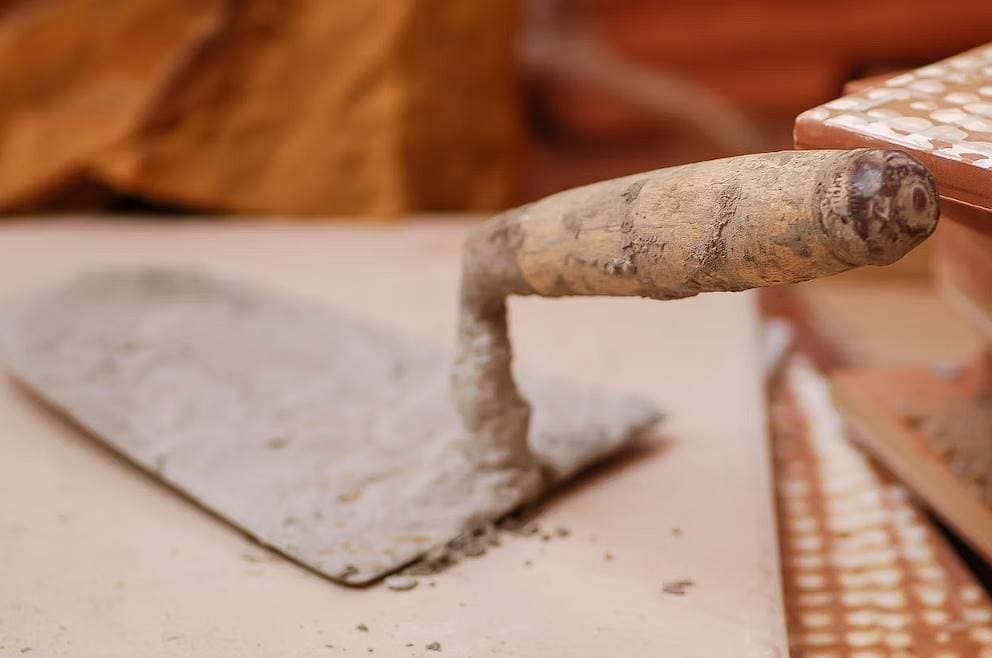
Plaster Maintenance And Repairs
Plastered surfaces cannot be kept in good condition or look good without regular care and timely repairs. Plaster is susceptible to damage from regular use, settlement, and the elements, resulting in cracks, chips, and other defects over time.
If these problems are fixed immediately, they won't worsen, and the ceilings and walls will still look great. Key factors to keep in mind when maintaining & repairing plaster include:
- Regular Inspection: Always watch for cracks, holes, and flaking in the plastered areas. Little problems can be fixed before they become major if they are found early and addressed promptly.
- Patching Minor Damages: Patching is an easy way to fix minor damage like cracks or chips. After cleaning the area and removing any loose plaster, a patching compound and plaster mix can be applied to the hole. Apply the patch, smooth it out with a trowel, and then wait for it to dry & cure as directed.
- Addressing Water Damage: One of the most prevalent problems with plastered surfaces is water damage, especially in leaky or humid environments. Before fixing the damaged plaster, you must locate and address the cause of water intrusion. Do not apply new plaster or repair the compound until the damaged area has dried fully.
- Matching Texture and Finish: Plaster repairs look best when they are seamless with the surrounding wall's texture and finish. Stippling, sponge finish, or a textured roller may be used along with other methods to achieve the desired effect.
- Reinforcing Large Cracks: Larger fractures or damaged sections of plaster may require reinforcement to stop their spread. To reinforce the area, apply a bonding solution to the crack's edges & insert metal or fibreglass mesh. The next step is to apply several coats of plaster and feather the edges of each coat so that they disappear into the background.
- Sanding and Smoothing: Plaster may need to be sanded after it has dried & cured if a smooth, even finish is desired. Carefully sand the mended area using fine-grit sandpaper or even a sanding block. Avoid damaging the surrounding area or creating uneven patches by being careful.
- Repainting or Finishing: After the plaster repairs, you may consider repainting or finishing it to look new. Choose paint and finishing material that goes well with the interior design and is a barrier for the plaster.
- Preventive Measures: Preventative steps to safeguard plastered surfaces can reduce the need for costly repairs. The plaster may crack if tension is applied by hanging heavy items. To avoid marking up your walls, use bumpers or pads at the back of your furniture. Also, ensure adequate ventilation to lessen the likelihood of moisture-related problems.
Plastered surfaces need regular care and prompt repairs to retain attractiveness and longevity. Plaster walls and ceilings can be kept in good condition for many years if small damage is immediately fixed using appropriate repair methods.
Conclusion
Cement is a chemical that can be used for many different things and sticks very well. It is often used in buildings to make smooth, strong surfaces, especially when plastering. It is important for making walls stronger and as a base for adding other decorative touches. Plastering with cement has a lot of benefits over lime plaster and gypsum plaster, such as strong adhesion, versatility, fire protection, and longer durability. But it has some problems like it might crack, it takes longer to dry, and it doesn't stick as well.
Ordinary Portland Cement (OPC), Portland Pozzolana Cement (PPC), White Cement, and Coloured Cement are some other famous types of plaster cement. Because it is flexible and sticks well, OPC is the best choice for sealing both inside and outside. PPC is a mixed cement that makes it easier to work with and stronger, making it perfect for places with a lot of water. White cement is a subset of the cement business, and coloured cement is a popular choice for artistic and architectural plastering.
Before applying plastering cement, it is important to clean the surface, fix any damage, dampen the surface, apply primer, mask and protect neighbouring surfaces, apply a scratch coat, level the surface, and give it enough time to dry. Proper preparation makes sure that the finish is smooth and strong and lasts for a long time. This keeps problems like cracking and unevenness from happening. For a smooth plaster job, you have to clean, fix, and prime the surface, among other things. Plastered surfaces need to be checked often and fixed right away if they are to last and look good. Plaster can be damaged by everyday use, settling, and the weather, which can lead to cracks, chips, and other flaws over time. When maintaining and fixing plaster, the most important things to think about are regular checks, patching small holes, fixing water damage, matching texture and finish, reinforcing large cracks, sanding and smoothing, repainting or finishing, and taking preventive measures. Plastered surfaces can stay nice and last longer if they are checked and fixed on a regular basis. To stop problems caused by wetness, you can use bumpers or pads on the backs of furniture and make sure there is enough airflow. If you follow these rules, your plaster walls and ceilings will stay in good shape for a long time.
Content Summary
- Cement, known for its adhesive capabilities, is a vital material in construction.
- Plastering cement creates strong and smooth surfaces in buildings.
- Understanding the advantages and applications of cement for plastering is crucial.
- Cement fortifies walls and serves as a base for aesthetic enhancements.
- This article explores the purposes and methods of applying cement plaster.
- Cement plastering plays a key role in the building industry.
- Plastering creates uniform and aesthetically pleasing surfaces.
- Plastering materials have specific benefits and drawbacks.
- Plastering cement adheres well and offers versatility.
- Lime plaster breathes and suits older buildings.
- Gypsum plaster dries quickly but lacks water resistance.
- Cement plaster offers durability, adaptability, and fire resistance.
- Lime plaster is breathable and eco-friendly.
- Gypsum plaster dries rapidly and provides a smooth finish.
- Cement types differ in quality and durability for plastering.
- Ordinary Portland Cement (OPC) is versatile and has high bonding qualities.
- Portland Pozzolana Cement (PPC) is suitable for wet environments.
- White cement is used for decorative plastering.
- Coloured cement allows for artistic and architectural creativity.
- Proper surface preparation is crucial for effective plastering.
- Cleaning, repairing, and priming ensure good plaster adherence.
- A scratch coat may be necessary on ultra-smooth surfaces.
- Levelling the surface guarantees a uniform plaster thickness.
- Thorough surface preparation is key for smooth plastering.
- Plastered surfaces require regular maintenance and repairs.
- Timely repairs prevent minor issues from worsening.
- Patching minor damages involves cleaning and using plaster mix.
- Water damage needs to be addressed before repairs.
- Matching texture and finish ensures seamless repairs.
- Reinforcing large cracks prevents further damage.
- Sanding and smoothing create an even finish.
- Repainting or finishing can make repaired plaster look new.
- Preventive measures can reduce the need for extensive repairs.
- Plastered surfaces need care for longevity and attractiveness.
- Cement's adhesive qualities make it indispensable in construction.
- Plastering cement produces strong and smooth surfaces.
- A grasp of cement's benefits for plastering is essential.
- Cement reinforces walls and serves as a base for aesthetics.
- Cement plastering has a significant role in the building industry.
- Different plastering materials have unique advantages and disadvantages.
- Plastering cement offers durability and versatility.
- Lime plaster breathes and suits older buildings.
- Gypsum plaster dries quickly but lacks water resistance.
- Cement types vary in quality and durability for plastering.
- Ordinary Portland Cement (OPC) is versatile and has strong bonding.
- Portland Pozzolana Cement (PPC) is ideal for wet environments.
- White cement is used for decorative plastering.
- Coloured cement adds creativity to plastering projects.
- Proper surface preparation is crucial for effective plastering.
- Timely repairs prevent minor plastering issues from worsening.
Frequently Asked Questions
Proper curing typically takes 7 to 14 days, depending on environmental conditions. It's essential to keep the plaster moist during this period to prevent cracking.
Yes, plastering cement suits interior and exterior surfaces, providing a protective and decorative layer.
Yes, a bonding agent enhances the adhesion between the existing surface and the plaster, ensuring better results.
With proper maintenance, plastering cement can last for many years. However, minor repairs may be required over time due to wear and tear.
Plastering cement can be applied to uneven surfaces, but the thickness of the plaster may vary to achieve a level finish. Preparing the surface is crucial for a successful application.
